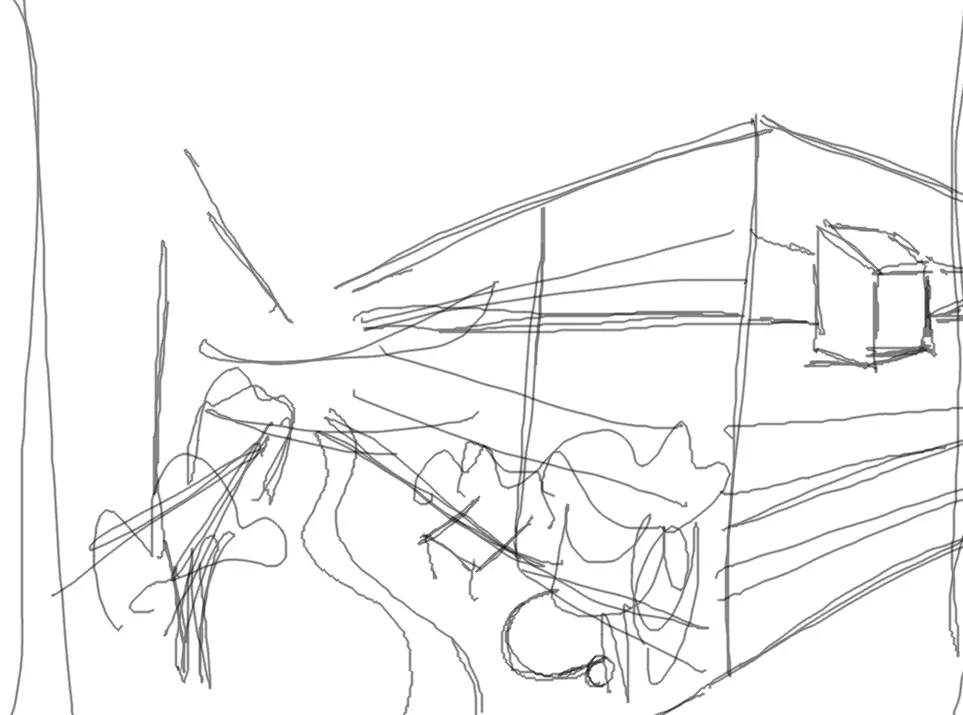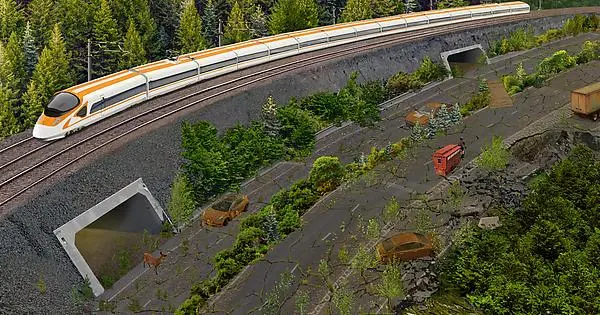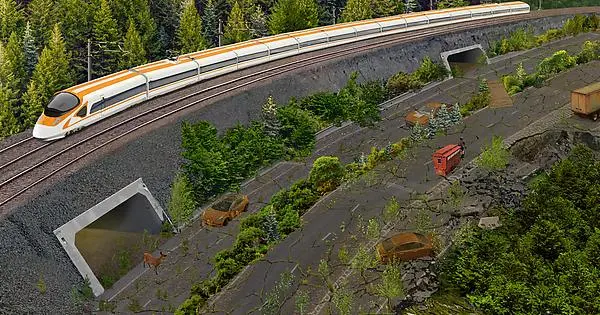I write science fiction, draw, paint, photobash, do woodworking, and dabble in 2d videogames design. Big fan of reducing waste, and of building community
https://jacobcoffinwrites.wordpress.com
@jacobcoffin@writing.exchange
- 33 Posts
- 31 Comments

 2·6 months ago
2·6 months agoSure thing! There were a bunch, (and there are tons of solar cooker and solar concentrator designs!)
I’ll admit I’d mostly been thinking of this guy but there were a bunch of other inventors doing similar things around the same time
Considering that most of the descriptions I’ve seen of drying the caustic soda mention pumping superheated steam through it, and that almost any of these systems, or something like these modern ones could produce that, there’s probably lots of ways to match these trains to analog solar power.
This thread had some really cool info on how these went together and the ages of the various components: https://www.reddit.com/r/solarpunk/comments/1b8048e/comment/ktmjpst/?utm_source=share&utm_medium=web2x&context=3

 2·6 months ago
2·6 months agoThanks! So far that site seems to be the best source of information I’ve been able to find (the Wikipedia article seems to mostly be a restated, trimmed down version of it) but there are a few other articles online I’m trying to vet for accuracy.
I’m especially interested in this quote:
“A fireless soda engine, together with evaporating apparatus, has been at work on the Aix la Chapelle-Burtscheid tramway for the last half year. In order to test the working capacity of this locomotive engine, and the consumption of fuel on a certain day, the Honigmann locomotive engine was put to work this day from 8:45 o’clock am till 8 o’clock pm, with a pause of three-quarters of an hour for the second quantity of soda lye. The engine was, therefore, at work for fully 10� hours, viz, 5� hours with the first quantity, and five with the second. The distance between Heinrichsalle and Wilhelmstrasse, where the engine performed the regular service, is 1 km, […] This distance was traversed sixty-four times, the total distance, including the journeys to the station, being 66 km.”
So it sounds like it ran for about five hours and traveled 33km on its load of caustic soda (I’m not sure at a glance which flavor chemical) and only took 45 minutes to refuel and come back up to temp.
And these were early designs, basically prototypes (though granted, the folks in that time making them probably knew a ton about steam locomotives). I imagine they could have been improved with time to study and refine the designs.
I’m not sure how well the boilers stood up to containing hot caustic stuff, but perhaps materials science has developed enough to help protect against that.
I’m writing and making visual art in the solarpunk genre, which tends to heavily emphasize trains and other public transit. But I want to broaden our options a bit beyond just electric trains. When I first heard about these, I felt like they’d mix super well with another invention of that time period, the mirrored solar concentrators used to run steam generators (some of the earliest solar power).
After all, one of the biggest disadvantages of the caustic soda locomotives was that it took more coal to dry the soda than to produce an equivalent amount steam directly with coal. But you don’t have to use coal. These 1800s mirrored dishes only require mirrors or polished metal and math to make (plus some simple motors and electronics to get them to follow the sun) and they could dry the soda for free. A lot of my focus is on less utopian, rebuilding societies, so trains and solar concentrators built with 1800s technology seems like a good place to start.
I’m going to start with a picture of a stop along the tracks for replenishing the soda in this style

using a layout something like this:

plus a description. And I’m hoping to work them into a fiction story and a tabletop campaign.
As for the technical side, I’m not sure on whether they’ll be draining the diluted caustic soda and pouring in fresh, whether they’ll be drying it inside the locomotive’s boiler using superheated steam generated with a solar boiler besides the tracks, perhaps swapping locomotives to avoid delays, or even swapping boilers as someone on reddit suggested. If I go with swapping the soda, probably the boiler tank won’t actually be inside the dish, but nearby, with the steam from the dish heating it.
I hope that helps, I’m very new to this technology and am already trying to mix it with other stuff so we’ll see how it goes.
That seems consistent with your opinion on the OS but I’m not sure it’s consistent with your opinion on public safety. People currently rebuild engines from junk, they replace their own brakes, convert their cars to run on different fuel sources. I would feel that tinkering with firmware poses, at worse, a similar risk. It doesn’t strike me as especially new or threatening. How do you feel about the right to repair?
Do you draw the line at creating something new? Because with hobby cars, they build them from kits or gather parts from a bunch of junkyards and reassemble them into working, often customized machines. No dealership or assembly line involved. And it is not uncommon to build sleeper cars by swapping in an engine the car was never meant to have. This can involve modifying the frame and rearranging other components to accommodate it. I’m not sure where the line for making their own engine is - is it a new configuration of existing components or do you mean like milling a new engine block? Either one has software analogies.
I’ve been skeptical of cars having OSs advanced enough to need updates, and I’d personally air gap them from both the Internet and the onboard entertainment system. But a glitchy OS doesn’t strike me as being far worse than the stuff I mentioned above done badly. States might have to figure out how to inspect them the way they do with the rest of the car (in states that actually do vehicle inspections at least).
Some people maintain their own vehicles. Some people even build them from scratch. Is the OS unique or are you against any vehicle work outside of a dealership?

 2·1 year ago
2·1 year agoThanks, I’d missed that one somehow - just signed up! https://pixelfed.social/i/web/post/607237425340447357

 3·1 year ago
3·1 year agoI’ve tried posting the image as a response to this comment (I’m guessing you don’t want to turn off noscript or whichever adblocker you’re running) but it won’t upload, possibly because this thread is on lemmy.ml? The good news is I’ve also uploaded it to a few other places:
Hopefully one of those will work. If you know of a more fediverse-friendly image hosting solution I should be using, let me know!

 51·1 year ago
51·1 year agoI would! It’s early, and I don’t think it was made to be cyberpunk. But the themes are there - the small blue-collar crew contrasted with the absurdly powerful corporation, and the distrust between them. The way the company casually turns their ship against them. And the aesthetics are there - Alien was one of the films that set the standard for used future aesthetics. I’d say cyberpunk for me is a mix of themes and aesthetics, but I’m good with including settings as well - the world of Alien and Aliens is cyberpunk, and I’m okay with calling a story set in it cyberpunk as long as it has some of the other elements. I don’t think I require the characters to be punks, I’d say a lot of cyberpunk characters aren’t.

 2·1 year ago
2·1 year agoI’ll look them up now! Thanks for the tip

 2·1 year ago
2·1 year agoThanks! I think there’s a wonderful opportunity in this kind of art to demonstrate alternatives! I’m planning one involving a city street next, and I’m happy to try to incorporate any ideas into what I’m planning. Hopefully it’ll include a parking garage that’s been filled in (kind of ad-hoc and colorfully) with living space, and a street that’s been replaced with a bike path and forest, with market stalls in the spaces between the trees. I’ll try to hint at a farm or park on the roof of the garage if possible.


 2·1 year ago
2·1 year agoI’ll check it out!
If you’d like another recommendation, No Dogs in Philly by Andy Futuro is, from what I remember, very lovecraftian and very cyberpunk. Unfortunately I can’t remember if it’s good. I definitely liked parts of it, though I think I found the main character frustrating for the same reasons as the protagonist from Necrotech. Both too tough and proud and spiteful to get out of their own way. Very noir but tiring too. It’s probably better than I remember, been years since I read it

 1·1 year ago
1·1 year agoI’m so glad you like it! I can’t believe how quickly he turns out pages for how good the art and writing is

 1·1 year ago
1·1 year agoYeah I’ve seen it listed along with Repo Man as one of the few punk movies.

 3·1 year ago
3·1 year agoThis is awesome

 1·1 year ago
1·1 year agoWhen Gravity Fails by George Alec Effinger is a kind of complicated recommendation for this. It features I think the most trans characters I’ve ever seen in one book, the main character’s girlfriend and most of their acquaintances are trans, and the story treats them decently as people with jobs and lives outside of that part of their identity. The problem, if it is one, is that they’re all sex workers. I can’t remember any trans character in the book who isn’t. This fits the story decently as they’re all living in the Budayeen, the entertainment and criminal quarter of an unnamed Middle-Eastern city, the only place where they, and small-time criminals like the protagonist, can exist with a minimum of hassle. But there’s some complicated history and pop-cupture entanglements around being trans and being a sex worker (and the limited other roles historically available to them) which might change how audiences read this forty years later. I honestly have no idea. I quite liked the book, it’s weird in places (for other reasons) but that’s what I read cyberpunk for, and it has a bunch of awesome cyberpunk concepts, a unique setting, and some creative misuses of technology.
I think the Gibson short story Johnny Mnemonic or Burning Chrome has a pair of guards, one of whom is trans, but it’s clearly been awhile since I read it. Gibson’s Sprawl books all had a kind of fascination with extending cosmetic surgery past sex and race, so it comes up in passing occasionally.

 2·1 year ago
2·1 year agoJust wanted to say thanks for the rec - I liked necrotech enough to buy the sequel

 2·1 year ago
2·1 year agoThat’s a good distinction I think. Like the Nimona movie tried for a fantasy-cyberpunk aesthetic that looked nice, but there really weren’t any cyberpunk themes in it. They could have dropped just about any other aesthetic onto the thing and had a similar film.

 5·1 year ago
5·1 year agoI definitely get that, whenever I find a new comic I usually check the latest page to see if it’s from years ago and full of comments wishing it’d come back. Having gotten invested in it, I very much hope this one starts up again; they’ve gone on hiatus before.
That said, there’s a lot of content here, including several finished prequel comics, and some ideas I think worth seeing. The fake post-soviet hellscape is a comedic take on the setting and I find the 90s retrofuture to be a kind of funny change from the more traditional 80s retrofuture (probably decently thematic, to set a cyberpunk comic with themes of selling out in the time period when corporations latched onto the genre and sold it away before it was really established). Most of the first cyberpunk I encountered, including Sherlock Holmes in the 22nd Century came from that marketing frenzy.

 1·1 year ago
1·1 year agoI think it was a plot point in Stepfather Bank, which, now that I remembered it exists, I think might be a bit cyberpunk too. I’ll have to reread it at some point.

 7·1 year ago
7·1 year agoOh man, I forgot about this one! I remember really enjoying it, and kind of being consistently surprised at the quality of the visuals in what I’d thought was a kind of low budget film. I’ll admit I’m bad at recognizing actors and now I’m wondering if this was more expensive to make than I’d thought.
















That’s awesome! Best of luck!